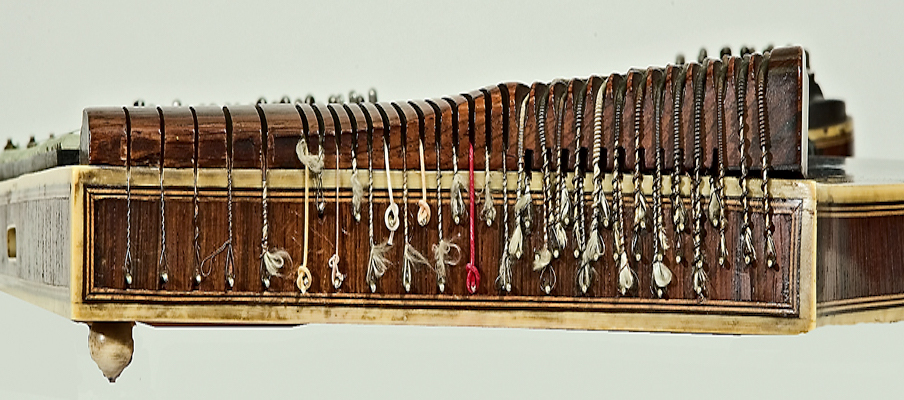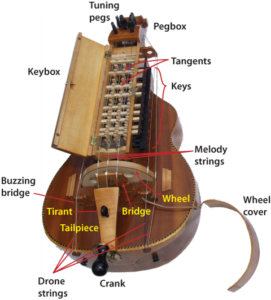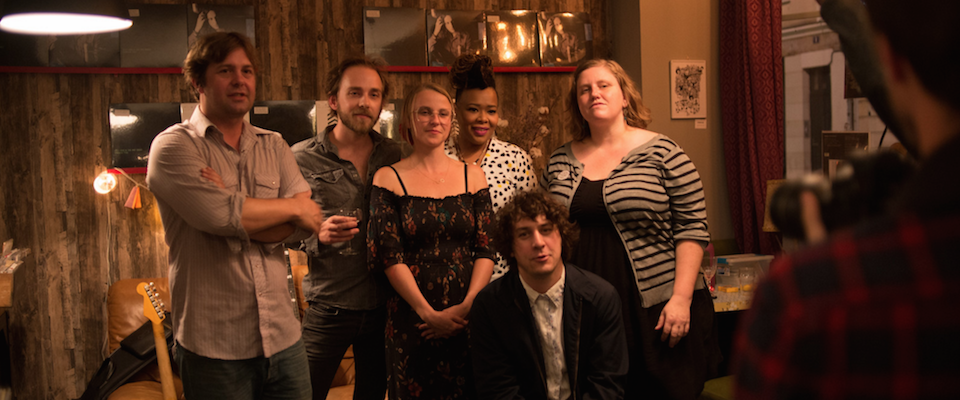The TONTO Synthesizer Stevie Wonder used for Music of My Mind, Innervisions, and Talking Book
Before flanger and overdrive pedals further punished the already remorseful souls of parents who bought their children electric guitars, before Dr. Robert Moog synthesized modern soundscapes and switched on a generation to electronic music, and before software like Ableton, Reason, and Pro Tools provided musicians of varying tastes a seemingly infinite array of digital color, the range of sounds and timbres available were limited to the instruments one could obtain. So kiss your signal processors for the gifting you with the 120 box of crayons, but remember that sometimes, there’s nothing like the real paints. Here’s a few interesting instruments that even the most powerful digital tools have difficulty recreating (maybe minus the theremin).
Hurdy-Gurdy
Despite a name that sounds like your body rejecting Saturday night’s poor decisions, the hurdy-gurdy manufactures some arguably beautiful and certainly otherworldly timbres. Manufacture is the operative word because it produces sound through a perverse and often baffling assortment of parts and machinations, and this attempt to explain how it works will either bore you to death or sap my desire to ever write again. Here’s what this strange creature looks like.
Okay, here we go….The crank is probably the instrument’s most unique component. Sound is produced by turning the crank, which turns a rosined wheel, which rubs the strings. It’s the same principle as a violin bow, and the hurdy-gurdy has similar vibrational qualities as other bowed instruments. The hurdy-gurdy has three strings. Pitch is changed on the melody strings with a small wooden keyboard. The drone string plays a fixed continuous pitch, kinda-sorta like a sitar. Finally, it also has something called a buzzing bridge, and applying pressure to it produces a rhythmic percussive buzz on one drone string. Okay if you’re still with me, what the hell does this thing sound like you ask? Imagine an amplified electric bug zapper attached to a bagpipe harmonizing with a viola.
Here it is with some electric signal processing.
Theremin
Spawned from Soviet military research in proximity sensors, the theremin was among the first electronic instruments ever made, and it’s also perhaps the only instrument that is played without actually touching it. Without going into the technical details that are, frankly, beyond my meager mind, here’s the simplified version: The theremin is operated with two metal antennae. Played with two hands, the distance from one antenna determines the pitch, while the other determines the volume. I suppose you can play with your feet if you wanted to, but there’s a lot more nuance to playing the theremin than one would expect.
Even if you’ve never heard its name, you know what a theremin sounds like. Popular musicians from The Beach Boys to Led Zeppelin, have used it, but its spooky timbre is most easily recognized by its presence in countless early science fiction films and television–usually signaling the arrival of some cosmic visitor. Perhaps influenced by its otherworldly accompaniment in film, a Theremin concert was even broadcasted into space with a massive radio telescope in order to contact alien civilizations. However, despite contributing to the humble electronic instrument’s intergalactic broadcast, the entertainment media that popularized it may have led it to be rarely taken seriously as a legitimate instrument. I’ll let Clara Rockmore dispel any doubts that the Theremin is capable of aural bliss.
Zither
Various kinds of zithers have been found from China, Madagascar, Turkey, to Japan and the oldest zither ever found dates back to 433 BC. While this instrument’s mythical presence in a bewildering variety of ancient civilizations may arouse some late-night alien conspiracy theories, its ubiquity makes sense in that it’s basically a guitar. Some things really don’t change. This primordial guitar comes in many forms, however they all have a body that serves as a resonating chamber, but unlike its modern mutation, it does not have a separate neck assembly. While its necked counterpart sits on the throne of modern music, Zithers still live on in the scores of popular film, and in its modern form: the autoharp.
And heres a modern Ghuzeng (a Chinese Zither) player playing with Shawn Lee.
–Ryan Wen





